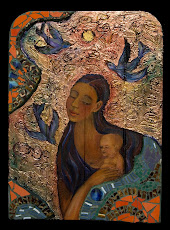I love fashion, but slavishly following fashion is not good for our planet. Fast food and fast fashion are responsible for environmental degradation. Yes, I love to get a good bargain and will buy the occasional item or accessory from a Big Box Retailer. But I'm aware that disposable personal and home decor fashion leaves huge carbon footprints. Globally and personally, we need to reconsider choices that lead us away from a sustainable economy and environment. The closer my choices are to expressing my authentic self, the less likely it is that those choices will result in buying a bunch of stuff I quickly decide I don't want, leading to another set of purchases that don't fulfill me. That kind of decision making doesn't support a happy life or a sustainable global environment.
How does this relate to choosing paint colors, flooring, furnishings and other home decor?
The process of choosing colors can put you in touch with your authentic self. Here's why. The more conscious you are when you make a choice, the more authentic that choice is, and the less likely it is that you'll soon discard your decision. When the process of
choosing colors for your home engages your deep desires, not only your aspirations, you are connecting with your authentic self. Like any thing, this won't work for everyone. But it is a way to access deeper meaning that works for me.
Color is non-verbal. The colors we are drawn towards speak to us about our lives. The soft browns of a favorite coffee drink, the colors of the soil and plants around a favorite place, the warm tones of skin, hair and eye colors we are most familiar with are all things subconsciously feeding our desires for a particular color.
So, how do you know what colors you
really want? Look at the colors you desire. When the voice pops in your head that tells you what you "should" want, tell it to go away, and reach for a sample of that paint color that you are sure you "shouldn't" use, but you are fascinated with anyway.
Consider this color sample thoughtfully. You may not end up using the exact color in your decor, but at least you will have acknowledged your desire before you make your final choices.
The more authentic your choices, the less you'll feel the need to rely on fashion color trends that have little to do with your life. And if a color trend does resonate with you, you'll be making a conscious choice rather than buying something because it seems like the thing to do.
The increased consciousness you bring to the purchasing process will have a ripple effect. Each purchase we do or don't make has a result that is felt in both our economic and natural environment. Increased consciousness leads us to consider the effect of our choices on the greater community. And I believe that a change of consciousness is the first step to sustainability.
Note: One company that I admire for their continual openness to environmental/economic sustainability and a more conscious life, something they title
Leading the Examined Life is
Patagonia.www.CristinaAcosta.com


































